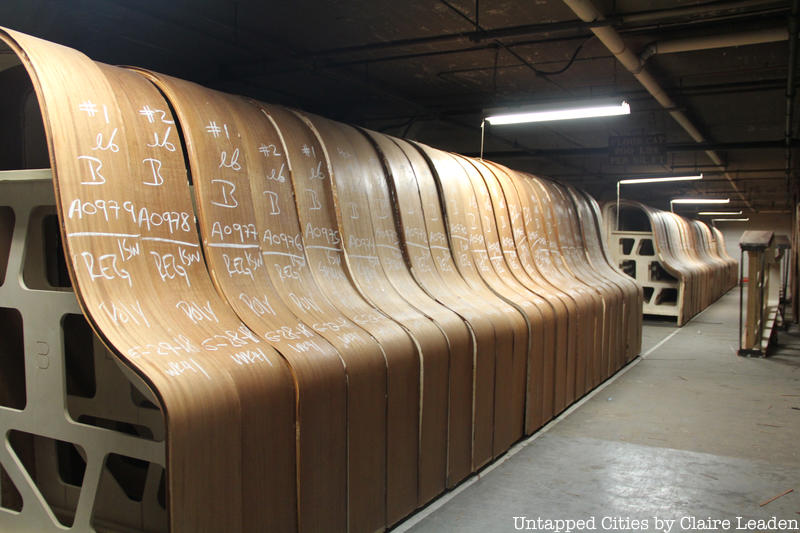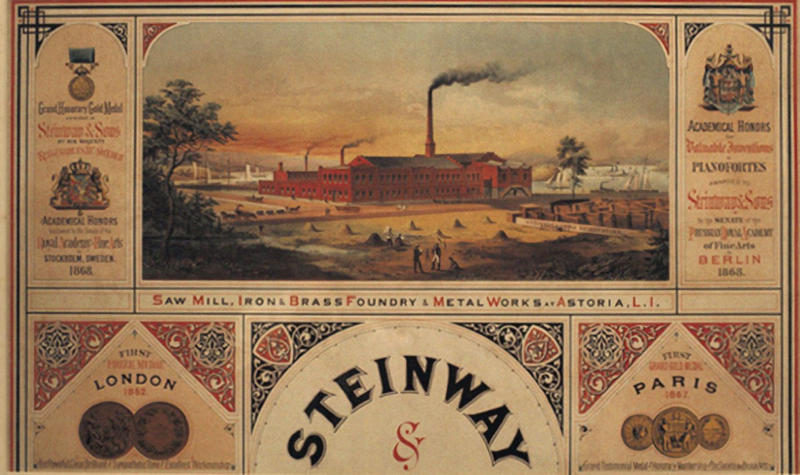
Steinway & Sons is an undoubtedly distinguished name for pianos, but unless you’re a musically inclined New Yorker, it may not hold particular significance. You might remember the shiny black veneer of your high school concert piano with the gold “Steinway & Sons” logo, or Queens locals might think of the prominent Steinway Street that runs through Astoria and Long Island City.
But the piano company Steinway & Sons actually has a significant New York City history, and its factory, originally established in the 1870s, is still standing in Northern Astoria toward the edge of the East River. Though only parts of the current factory are original buildings dating back to the 1870s, and what used to be two distinct and separate factories in Astoria has been consolidated into one, workers inside are still meticulously crafting each piano by hand, following the highest quality procedures as they did 160 years ago.
It all began in 1850, when piano maker Heinrich Engelhard Steinweg (to become Henry E. Steinway) immigrated to America with his children. In 1853, embracing the new American entrepreneurial spirit, he and his sons formed Steinway & Sons, where they worked tirelessly to improve the European piano and create the best version of the instrument possible.
On a recent tour of the Steinway Piano Factory, we discovered just how precise the process still is, and learned some of the most fascinating secrets lurking beneath each piano’s keys…
10. There used to be a “Steinway Village” around the factory where workers lived

Image courtesy of Steinway & Sons
When the Steinway Factory was originally built in Astoria, there was no nearby housing. To ensure workers didn’t have to commute to the facility from Manhattan or other areas with housing, the company constructed surrounding rowhouses where workers lived. Some of these original buildings can still be seen on 20th Ave. and 41st St. in Astoria. You can tell by looking up at the cornerstones of the buildings for engraved street names (streets used to be named after the workers themselves, like Charles St., etc.).





